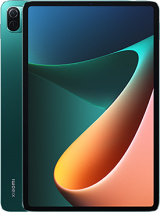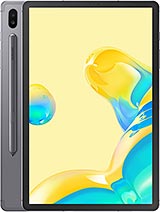Battery Life Explained: Are you killing your battery with bad charging habits? By Android Central
Sponsored by automobile, we all want the best battery life out of our phones, but the way we use and charge them can mean they lose battery life over time and to add to the confusion, there's a lot of misinformation out there about what you should and shouldn't do when it comes to charging and discharging your phone's battery. So, let's start off with some battery basics. Chances are unless you're watching this from the far distant future. Your phone has a lithium-ion or lithium polymer battery. There are pros and cons for these kinds of batteries, including safety and cost, but both are very similar when it comes to charging and longevity neither suffers from the so-called memory effect, meaning, if you always charge to say 60, then eventually, the capacity will decrease to this level. Okay: okay, the memory effect has been seen to a limited degree in some lithium-ion cells, but at least it's much less prominent in this kind of battery compared to older types of battery with nickel, cadmium and nickel metal hydride with these older batteries, you'd always want to make sure you deplete it fully before recharging and always recharge it to a hundred percent with modern lithium batteries in a weird way.
Actually, the opposite is true because of the chemistry of these batteries, you want to minimize the amount of time it spends without a very high or very low capacity levels, both of which put strain on the battery. The truth about this and all kinds of battery degradation really is that you'll only really see the difference. This makes over years of use, but hopefully you're planning on keeping a new phone for a couple of years anyway. So you want to make the most of your battery, that's not to say that having a phone battery at 100, some time is bad. Your battery is there to be used after all, but if you're constantly charging it from 80 up to 100, it's gonna age faster than it would otherwise because of the strain this puts on the internals of the cell.
That's why some recent android phones, like the ASUS before 7 pro, actually give you a score for your charging habits. So you'll know if it'd help to make some changes and in ASUS the latest gaming phone the ROG phone 3, there's even an option to cap the regular charge limit at 80 percent, because that phone has a ginormous, 6 000 William hour battery. So probably you don't always need that full charge to get through the day. Other brands like OnePlus, have software features that learn when you normally wake up and make sure to only charge the final 80 when it's actually needed to leave you with a full charge in the morning. It's a really nice balance between battery health and practical use overnight.
Charging is actually a fascinating point here, because obviously, charging overnight risks your phone being at that less than ideal 80 to 100 range for longer. That's even more true! When you consider fast charging now fast, charging can already age your phone battery more quickly because of the heat it produces. The faster you charge, the more heat and high heat is bad for lithium batteries. So most fast charging systems have a way to cleverly dissipate the heat and only charge at full whack for the first 50 or so when the battery can cope with it more easily. So with a quick charger, say you plug in overnight, and it takes even less time to reach that 100 figure, and you're, holding it at full capacity for even longer than if you'd used a slow charger, and you're producing more heat in the process, which is also not ideal, but also, if you're, a phone manufacturer.
You really shouldn't expect your customer to have to worry about this sort of thing. That's why the best kind of charging isn't fast or slow. It's smart and, like I said, we're already seeing many android manufacturers bring in smart charging systems to limit the amount of time your battery spends in that critical, 80 to 100 range or worse, plugged in and still charging at 100. This video was sponsored by tells mobile. Here's, the thing that nobody tells you can afford the latest phone if you're smart enough to save on your phone bill with automobile, you never pay for more than what you use and what you use is absolutely your call.
Tell gives the controller to the customers, so you get to build your own plan and add minutes and data as you. Please. Popular options include unlimited token text, plus one gigabyte for ten dollars a month, four gigabytes for 19 a month and eight gigabytes for 29 a month, no fees whatsoever. What tells is basically saying is anything your carrier can do. We can do better and cheaper.
That means no contract, great website pay-as-you-go payment, free hotspot and human customer service. When you find a smartphone that completes you don't need to worry, you can bring it to teller, while keeping your number point taken, get more for less with automobile and use those extra savings on your phone bill to finally get your hands on the smartphone you want. Finally, we should talk about wireless charging. A bit wireless charging is less efficient and produces more heat than charging over a cable and, as we've already seen, heat is the enemy of long-term battery health. That's why most fast wireless charging systems like OnePlus and Huawei's have built-in fans to keep things at a reasonable temperature.
Still, if you're going to charge, wirelessly slow, opportunistic toppers throughout the day are the best and for the reasons we've already talked about, if you've got a wireless charger on your desk for quick top-ups throughout the day, it's best to not just have it sitting there all day at a hundred percent. Every kind of battery charging solution is a trade-off between convenience, speed and long-term battery health. Ultimately, in phones, it's going to be smart charging software that helps make the difference to battery health in the long run, especially when we have super quick charging standards, pushing past 100 watts on the horizon, and it's also true that your battery or 100 of it is there to be used, and the battery degradation is something that will really only become apparent over one or two years of use. But hopefully you found some tips in this video that will help you make your phone's battery last a little longer, at least until we discover some new angled battery science that helps us move past the limitations of lithium-ion. That's it for now be sure to subscribe to android central.
So you don't miss our future coverage of phones like the upcoming galaxy s21. Thanks for watching, and I'll see you next time.
Source : Android Central




























